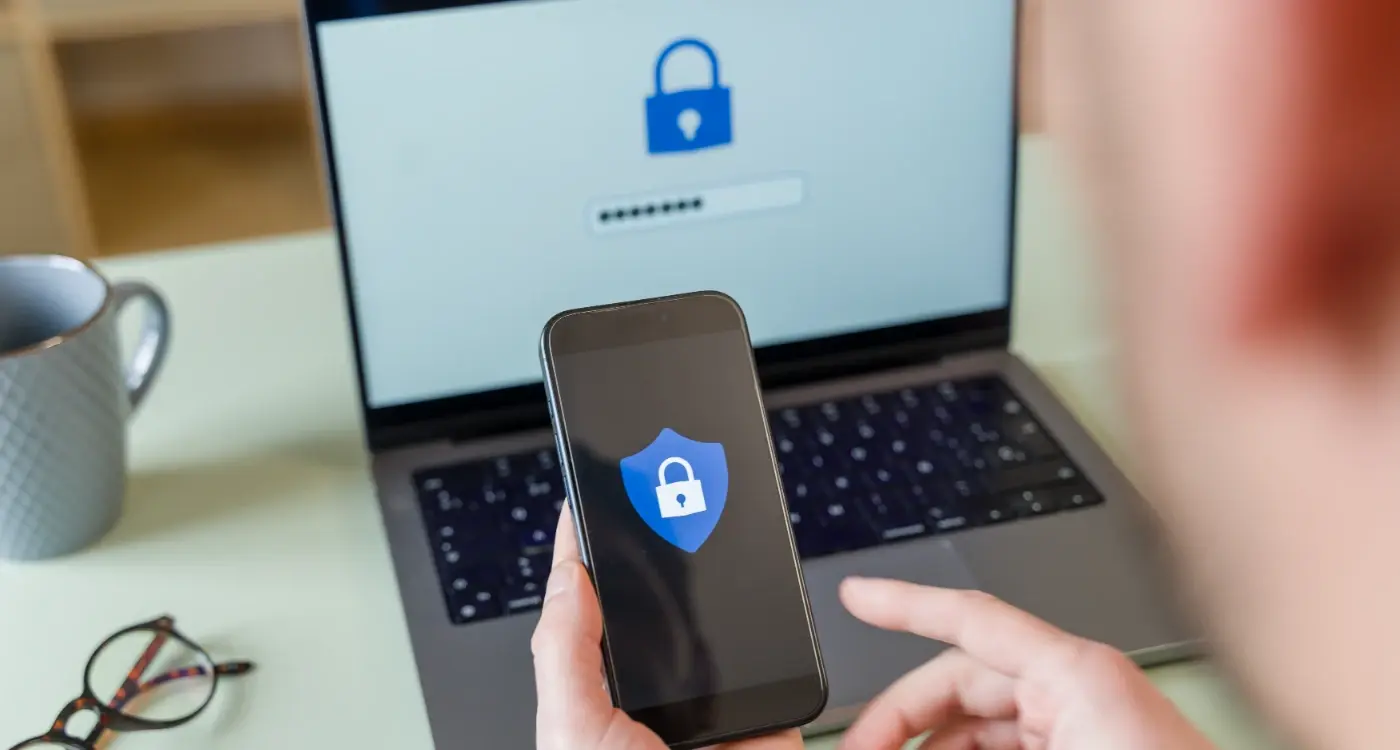How Can I Build Bulletproof Enterprise App Security?
Enterprise mobile applications handle some of the most sensitive data in business today—from customer records to financial transactions to internal company secrets. I've spent years working with companies who've learned this lesson the hard way, and trust me, you don't want to be one of them. The stakes are higher than ever; a single security breach can cost millions in damages, destroy customer trust, and land your company in hot water with regulators.
Here's the thing about enterprise app security—it's not something you can bolt on at the end of your development process. You can't just add a password screen and call it secure. Real security needs to be baked into every layer of your application, from how users log in to how data travels between your app and your servers. It's about understanding the threats you're facing and building defences that actually work.
Security isn't a feature you add to your app; it's the foundation you build your entire application on top of
This guide will walk you through the practical steps you need to take to build genuinely secure enterprise applications. We'll cover everything from authentication systems that can't be easily hacked to encryption that keeps your data safe even if someone gets their hands on it. By the end, you'll have a clear roadmap for building apps that your security team will actually approve of.
Understanding Enterprise App Security Threats
Enterprise apps face a completely different threat landscape compared to consumer apps—and the stakes are much higher. When you're dealing with sensitive company data, customer information, and potentially millions in revenue flowing through your app, business app security isn't just nice to have; it's absolutely critical.
The threat landscape keeps evolving, but there are some common attack vectors that consistently target enterprise applications. Data breaches top the list—hackers love going after poorly secured databases containing customer records, financial information, or intellectual property. Then there's man-in-the-middle attacks, where cybercriminals intercept communication between your app and servers, especially dangerous on unsecured networks.
Most Common Enterprise App Threats
- SQL injection attacks targeting backend databases
- Insecure API endpoints exposing sensitive data
- Weak authentication allowing unauthorised access
- Mobile device theft or loss compromising stored data
- Insider threats from disgruntled employees
- Malware and phishing attacks targeting users
What makes enterprise threats particularly nasty is that they're often targeted rather than opportunistic. Cybercriminals research your company, study your systems, and craft specific attacks designed to exploit your weaknesses. They're patient, persistent, and unfortunately quite clever about finding ways in.
Understanding these threats is the first step towards building proper defences—you can't protect against what you don't know exists.
Building Strong Authentication Systems
Think of authentication as the front door to your enterprise app—it's the first line of defence against unauthorers. Over the years, I've seen countless businesses focus on fancy features whilst neglecting this fundamental security layer. Big mistake. A weak authentication system is like having a solid brick wall with a cardboard door; it doesn't matter how secure everything else is.
The good news is that building robust authentication doesn't have to be rocket science. Multi-factor authentication (MFA) should be your starting point—combining something users know (password), something they have (phone), and something they are (fingerprint). This creates multiple barriers that make unauthorised access significantly harder.
Core Authentication Components
- Strong password policies with minimum complexity requirements
- Biometric authentication where supported by devices
- Time-based one-time passwords (TOTP) for second-factor verification
- Account lockout mechanisms after failed login attempts
- Session management with automatic timeouts
- Single sign-on (SSO) integration for enterprise environments
Never store passwords in plain text. Always use salted hashing algorithms like bcrypt or Argon2—your future self will thank you when the security audit comes around.
Advanced Security Measures
Beyond basic MFA, consider implementing adaptive authentication that analyses user behaviour patterns, device fingerprinting, and location-based access controls. These create additional security layers without frustrating legitimate users—the sweet spot every developer aims for. For detailed guidance on password policies and secure password requirements, proper authentication policies are essential for enterprise security.
Data Protection and Encryption
Data protection isn't just about following rules—it's about keeping your users' trust. When someone downloads your enterprise app, they're handing over sensitive information that could include financial records, personal details, or company secrets. Lose that data or let it fall into the wrong hands, and you've got a problem that goes way beyond a bad app store review.
Encryption is your first line of defence here. Think of it as scrambling your data so badly that even if someone steals it, they can't read it without the special key. There are two main types you need to know about: encryption at rest (when data is stored) and encryption in transit (when data is moving between your app and servers). Both are non-negotiable for enterprise apps.
Getting the Basics Right
Start with AES-256 encryption for stored data—it's the gold standard that even governments use. For data moving around, TLS 1.3 should be your minimum. Don't try to build your own encryption; use proven libraries that security experts have already tested thoroughly.
Beyond Basic Encryption
Database encryption, file-level protection, and secure key management all play their part. The key management bit is tricky—you need somewhere safe to store those encryption keys, and it can't be in the same place as your encrypted data. Cloud providers offer key management services that handle this complexity for you, which honestly makes life much easier.
Secure Network Communication
When your enterprise app talks to servers, it's like sending letters through the post—but these letters contain your most sensitive business data. The difference is that digital letters can be intercepted, read, and tampered with much more easily than physical ones. That's why secure network communication sits at the heart of enterprise app security.
The golden rule here is simple: never trust the network. Whether your users are connected to office Wi-Fi, public hotspots, or mobile data, you must assume someone could be listening. This means encrypting everything that travels between your app and your servers using HTTPS with TLS 1.3 or higher. No exceptions.
Certificate Pinning and API Security
Certificate pinning takes your security up another notch by making sure your app only trusts specific certificates—not just any valid one. Think of it as teaching your app to recognise only your server's unique fingerprint. This stops attackers from using fake certificates to intercept your data.
The weakest link in network security isn't usually the encryption itself—it's the endpoints where data gets processed and stored
Your API endpoints need protection too. Rate limiting prevents abuse, proper authentication tokens keep unauthorised users out, and input validation stops malicious data from wreaking havoc. Remember: every single API call is a potential entry point for attackers, so treat them all with the same level of security. For comprehensive guidance on protecting your backend services, learn more about securing your app's API from unauthorised access.
Access Control and User Permissions
Getting user permissions right is one of those things that can make or break your enterprise app's security. I've seen plenty of apps where developers thought they'd nailed the authentication bit, only to realise they'd left gaping holes in who could access what once users were inside the system.
The basic principle is simple: give people access to what they need for their job, nothing more. Your marketing team doesn't need to see payroll data, and your HR department shouldn't be able to access customer payment information. This approach—called the principle of least privilege—sounds straightforward but gets tricky when you're dealing with complex organisations.
Role-Based Access Control
Most enterprise apps use role-based access control, where you create different user roles like 'Manager', 'Employee', or 'Admin'. Each role gets specific permissions attached to it. When someone joins the company, you assign them a role and they automatically get the right level of access. It's efficient and works well for most businesses.
Permission Management Best Practices
Regular permission audits are your best friend here. People change roles, leave companies, or take on new responsibilities—and if you're not keeping track, you'll end up with former employees still having access or current staff unable to do their jobs. For detailed strategies on implementing effective access controls, check out this guide on managing user permissions in business apps. Set up automated reviews and make sure someone's responsible for keeping permissions current.
Security Testing and Monitoring
Testing your enterprise app security isn't a one-time thing—it's an ongoing process that needs to happen throughout development and after launch. I always tell clients that building secure apps is like maintaining a house; you can't just paint it once and expect it to look perfect forever.
Start with penetration testing during development. This involves deliberately trying to break into your app to find weak spots before hackers do. You'll want to test authentication systems, data encryption, and network connections. Don't forget to test how your app behaves when users input unexpected data or try to access areas they shouldn't.
Set up automated security monitoring that alerts you immediately when suspicious activity occurs—waiting until Monday morning to check logs could be too late.
Types of Security Testing
- Static code analysis to spot vulnerabilities in your source code
- Dynamic testing while the app is running
- Penetration testing by security experts
- Vulnerability scanning for known security issues
- User acceptance testing for security features
After launch, continuous monitoring becomes your best friend. Set up real-time alerts for failed login attempts, unusual data access patterns, and API abuse. Log everything but make sure you're not storing sensitive information in those logs. Regular security audits should happen at least quarterly—more often if you're handling particularly sensitive enterprise data. For comprehensive security validation strategies, explore this detailed guide on ensuring your app remains secure.
Compliance and Industry Standards
When you're building enterprise apps, following the rules isn't optional—it's the law. Different industries have their own security requirements that you must follow. Healthcare apps need to comply with regulations like HIPAA, whilst financial apps must meet strict banking standards. These aren't just suggestions; they're legal requirements that can result in hefty fines if ignored.
Understanding Your Industry Requirements
Each sector has its own set of rules. Financial services must protect customer banking data under regulations like PCI DSS for payment processing. Healthcare organisations need to safeguard patient information under data protection laws. Government contractors often require additional security clearances and encryption standards.
The good news is that most compliance frameworks share common security principles—strong encryption, access controls, and audit trails. By building these into your app from the start, you'll cover most compliance requirements without having to retrofit security later. For startups and smaller companies just beginning their security journey, understanding essential security measures for early-stage applications can provide a solid foundation.
Documentation and Audit Trails
Compliance isn't just about having secure systems; it's about proving you have them. You need detailed documentation showing how your app handles data, who can access what, and logs of all security events. Regular security audits and penetration testing reports become your evidence that you're taking security seriously. Keep everything documented—regulators love paperwork, and missing documentation can be just as problematic as missing security controls.
Conclusion
Building bulletproof enterprise app security isn't just a nice-to-have anymore—it's absolutely necessary. The threats are real, they're evolving constantly, and frankly, they're not going anywhere. But here's what I've learnt after years of working on enterprise mobile security: it's not as overwhelming as it might seem at first.
We've covered a lot of ground in this guide, from understanding the threats that keep security teams busy to implementing robust authentication systems that actually work. Data encryption, secure network communication, proper access controls—these aren't just buzzwords; they're the building blocks of secure app development that protects your business and your users.
Security testing and monitoring give you the ongoing visibility you need, whilst compliance frameworks provide the roadmap for meeting industry standards. The key is treating enterprise mobile security as an ongoing process rather than a one-time checkbox exercise.
Start with the app security best practices we've outlined, but don't try to implement everything at once. Pick the areas that pose the biggest risk to your organisation first, then build from there. Your future self—and your users—will thank you for taking enterprise app security seriously from the beginning rather than treating it as an afterthought.
Share this
Subscribe To Our Learning Centre
You May Also Like
These Related Guides

Which Security Protocols Should Enterprise Apps Include?

How Do You Test Enterprise App Security Vulnerabilities?



